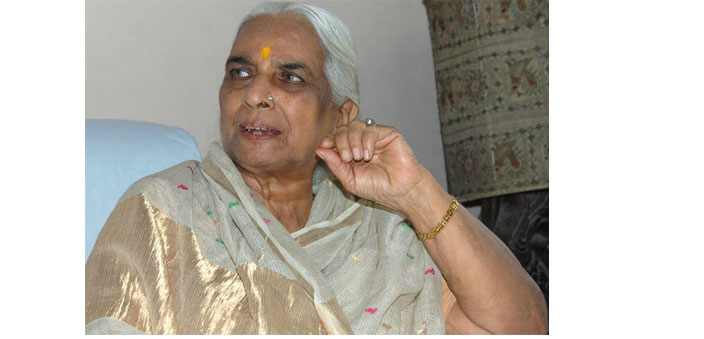The Queen of Thumri (1929 – 2017)
Girija Devi, the iconic Queen of Thumri died, aged 88 at Alipore, West Bengal of cardiovascular ailments on 24 October 2017. An Indian classical singer of the Seniya, Purab and Banaras gharanas of Hindustani classical and non-classical vocal music, she performed the purabi ang thumri style, typical of the tradition, and helped elevate its status. Her repertoire included the semi-classical genres kajri, chaiti, and holi, and she sang khyal, Indian folk music, and tappa.
In a career spanning more than half a century, she brought the evocative thumri derived from the word thumakna, meaning to walk with dancing steps, to the frontlines, out of kothas to the proscenium stage and gave it respect. She lived an art form, which by nature and design is marked by adaa, flair, and perhaps even a mild flirtation.
Born on 8 May 1929 to Ramdeo Rai, a zamindar, who played the harmonium and taught music, the family relocated to Banaras, when Girija was two years old. The city became an integral part of her life and her music, a city whose culture, sights and sounds became an integral part of her gayaki and her world view.
Girija took lessons in singing khyal and tappa from vocalist and sarangi player Sarju Prasad Misra from the tender age of five. She also starred in a movie ‘Yaad Rahe’ aged nine and continued her studies under Misra in a variety of styles, till his death in the early 1960s. She made her public debut in 1949 on A.I.R, Allahabad, after marriage, but faced opposition from her mother and grandmother, because of the taboo on upper class woman performing publicly, but was encouraged by her husband. She however, agreed to not perform privately for others, and gave her first public concert in Bihar in 1951.
She later worked as a faculty member of the ITC Sangeet Research Academy in Kolkata in the 1980s and of the Banaras Hindu University during the early 1990s, and taught several students to preserve her musical heritage.
But soon the strains and demands of domestic life interfered with her practice and so she went away to Sarnath for a year, where she continued to take rigorous music lessons from her guru. That deep, spiritual practice, sadhana, changed her life and she returned to Banaras with a new insight of what sur, a musical note, really meant.
But the tragic death of her husband in 1975 shocked her. She stopped performing, but with the prodding of friends she went back to the stage. This resulted in her looking inward, introspecting and getting further insights. From then on, she devoted herself to understanding the importance of poetry and lyrics in singing.
Affectionately called Appaji, Girija Devi in an off-white Banarasi sari and a tight, thin plait of silver hair hanging down her the back, would flash a smile, all the while crooning a dadra in Raga Gauri Bhairav. She could have been anybody’s grandmother. Flashing a toothy smile, wiping paan stains from near her mouth, she would laugh, but also get angry at small things, and hated cooking. She was ever the generous, warm-hearted, loving guru and guide, the mother-like figure, so gentle, with her down to earth wisdom sought by so many.
Her whole life revolved around the River Ganga, singing peans of its many moods and moments. Even till her last days, her sincere wish was to continue to learn, grow and to evolve. She was bestowed a lot of awards like the Padma Shri (1972), Padma Bhushan (1989), Padma Vibushan (2016), Sangeet Natak Akademi Award (1977), Sangeet Natak Akademi Fellowship (2010), Maha Sangeet Samman Award (2012), Sangeet Samman Award (Dover Lane Music Conference), GiMA Award 2012 (Lifetime Achievement) and the Tana Riri Puraskar.
Yet, listening to her music, one realises that no award can fully capture the essence of this artiste or her immense contribution to music. A true seeker, Girija Devi’s wish for a music academy however remained unfulfilled. Her demise has left a deep void. She is survived by her daughter
Dr. Sudha Datta.

